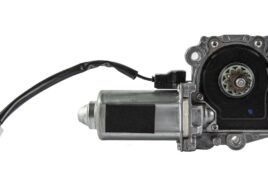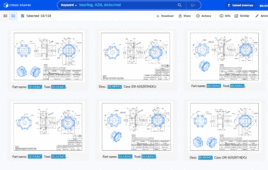 Within seven years, the concept of an “app,” like the ones used in smartphones, has become a nearly universally understood tool. If the people who use your products know how to use a smartphone, then it just makes sense to adopt this concept when developing features and functions in your products. Even in the machine tool industry, apps are becoming the popular way to guide and teach operators on how to work with the machines, track various performance parameters and ensure a scalable machine tool for the customer.
Within seven years, the concept of an “app,” like the ones used in smartphones, has become a nearly universally understood tool. If the people who use your products know how to use a smartphone, then it just makes sense to adopt this concept when developing features and functions in your products. Even in the machine tool industry, apps are becoming the popular way to guide and teach operators on how to work with the machines, track various performance parameters and ensure a scalable machine tool for the customer.
A machine tool app is a piece of software that streamlines or simplifies operations on a CNC machine and its control, enhancing productivity. It is a self-contained program written for a specific function. Because of the dynamics of the manufacturing environment, openness to customization is a crucial feature of any machine tool app. Just like a smartphone app, a true machine tool app is built on an open platform that can be customized by the user or a third-party developer, such as machine tool accessory providers, operators, programmers or IT specialists.
A machine tool app can also be accessed in a variety of ways: on the CNC control, on a laptop/desktop computer, or through a tablet or smartphone. Therefore, these apps can connect and extend throughout the business and even into the user’s personal life. Machine tool apps are an open and mobile technology that is designed to make manufacturing easy.
Okuma has launched its own App Store—a central online marketplace for machine tool apps and related content. The App Store contains not only apps developed by Okuma, but also apps from its distributors and various members of Partners in THINC.
 From this App Store, users can download apps that:
From this App Store, users can download apps that:
Reduce Scrapped Parts: Many apps are designed to avoid the high costs associated with scrapped parts. For example, Part Flip Monitor is used for CNC lathe operations where a part is machined on both sides using a single spindle. It clearly displays “first side running,” “part flip needed” or “part completed,” so the operator can tend to other machines while keeping track of the lathe’s progress.
Reduce Downtime: The Scheduled Maintenance app gives users the opportunity to display a daily reminder of inspection tasks that should be performed prior to running the specific machine where this application is installed. And Coolant Monitor checks coolant concentration levels and sends a warning to the operator if action is needed. The result is “planned uptime.”
Diminish “Labor Pains”: This app provides handy guidance, right at the machine tool, that makes it easier to learn processes and run jobs. An example is Caron Engineering’s AutoComp, which adjusts tool offsets based on dimensional data from any number of gauging devices, taking the guesswork out of compensating the machine.
Increase Part Quality: Nearly every machine tool app increases overall part quality. With the Blum Gauging Guide and Renishaw GUI apps (which guide users through simple and logical steps to program gauging), part quality can be increased without adding time-consuming manual protocols.
Increase Productivity: Tool selection calculators and configurators help the user select tools and determine feeds and speeds, increasing productivity of the workers and improving overall shop performance. And with more apps to come, productivity will continue to improve.
Okuma America Corporation
okuma.com
Filed Under: Machine tools + subtractive manufacturing, MORE INDUSTRIES





Tell Us What You Think!